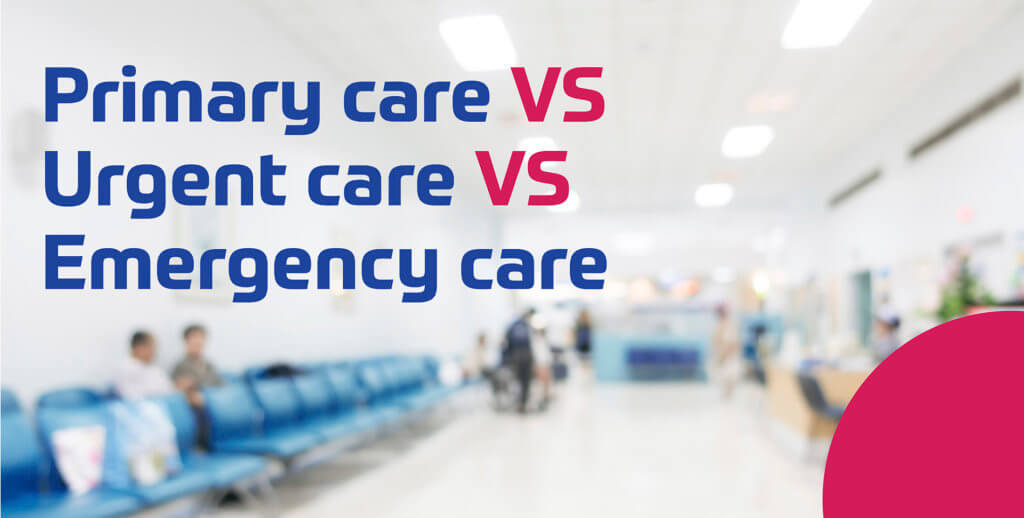Primary Care vs. Urgent Care vs. Emergency Care

Do you need to go to an urgent care? Or a medical clinic? When is something an emergency room issue? How do you know?
When life happens, medical care providers are here to make sure we get back on track with our health. But when dealing with a situation—where should you go for care? Between primary care, urgent care, and the emergency room, you have options. But to better choose what the situation calls for, you need to know how each functions.
Primary Care
Cost: low cost – insurance copay
Availability: usually 9-5 and sometimes the weekend
For: day-to-day care and standard medical issues
Primary Care is your established care provider. Your provider takes care of your overall health—from bloodwork to cholesterol checks to minor ear infections. When you go to your Primary Care team, they can cover:
- Lab tests/Imaging (routine blood draws, pap smears, pregnancy, STD/STI testing, x-rays)
- Vaccinations (Chickenpox, COVID vaccines, pneumonia, flu, tetanus, and more)
- Screenings (Cancer screenings, heart health, diabetes screenings, genetic screenings, and more)
- Acute care for flu, fevers, headaches, joint pain or infections.
- Stitches, rashes, and other minor injury care
- Chronic care for arthritis, asthma, diabetes, depression, thyroid issues, and more
Your Primary Care Provider is the person who helps you through your health journey, and gets you the care/specialists you need for a healthier life.
Urgent Care
Cost: medium cost – insurance copay if covered
Availability: extended daytime hours
For: low-risk medical issues that need care quickly
Urgent care is there when you can’t get to your established provider, whether it’s due to being out of town on vacation, or it’s outside the usual provider’s hours. You don’t have to be established with a provider at an urgent care, but most likely will experience wait times due to their nature. Urgent care can often provide:
- Acute care for fever, flu, colds, sinus infections, and other illnesses when your Primary Care Provider is unavailable or out of reach
- Stitches
- X-rays
- Fracture care
- IV fluids
- Seasonal vaccinations like flu
Urgent care is the in-between for primary and emergency care—they’re available when you can’t see your provider, but cheaper than the ER.
Singing River Medical Clinics are equipped to provide walk-in or same-day appointments for urgent care needs. Some clinics even offer on-sit X-Rays!
Emergency Room
Cost: high cost – insurance covers some, you pay some
Availability: 24/7
For: medical emergencies and health problems that can’t wait
When hold my beer goes wrong. The ER is for when you shouldn’t wait for care, and you are in need of immediate medical attention. While it might be more expensive, your life is far more important than what the bill might be. The emergency room covers:
- Strokes
- Heart attacks
- Trauma care
- Extensive/severe injuries
- Mental health crises
- Sexual assault cases
Emergency care isn’t needed for simple stitches and broken bones, but if something feels “wrong”, the Emergency Room is prepared for any serious medical situation you need with the response time required.
Healthcare aims to meet you where you need it most and every situation needs the right care. Whatever your need—choose to be an advocate for your health and find the right person for the job (of keeping you in tip-top shape of course!)
Looking for your perfect Primary Care Provider? Find a Singing River Primary Care Provider and get started today!
Content inspired by Healthcare is Selfcare: The Podcast
Hear more from Dr. Murray on Episode 10: